
EASL Congress 2023
21-24 June Vienna

|
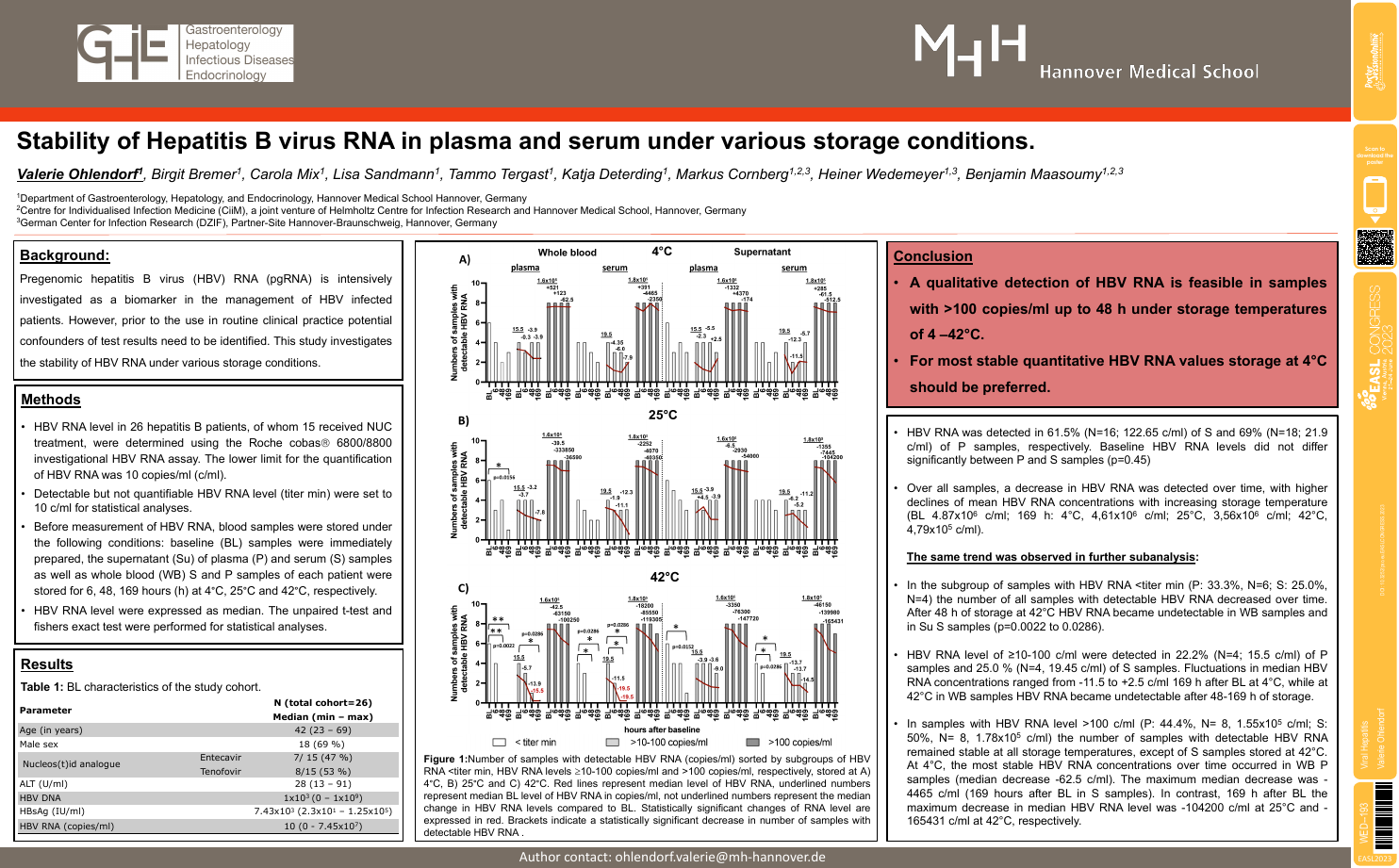
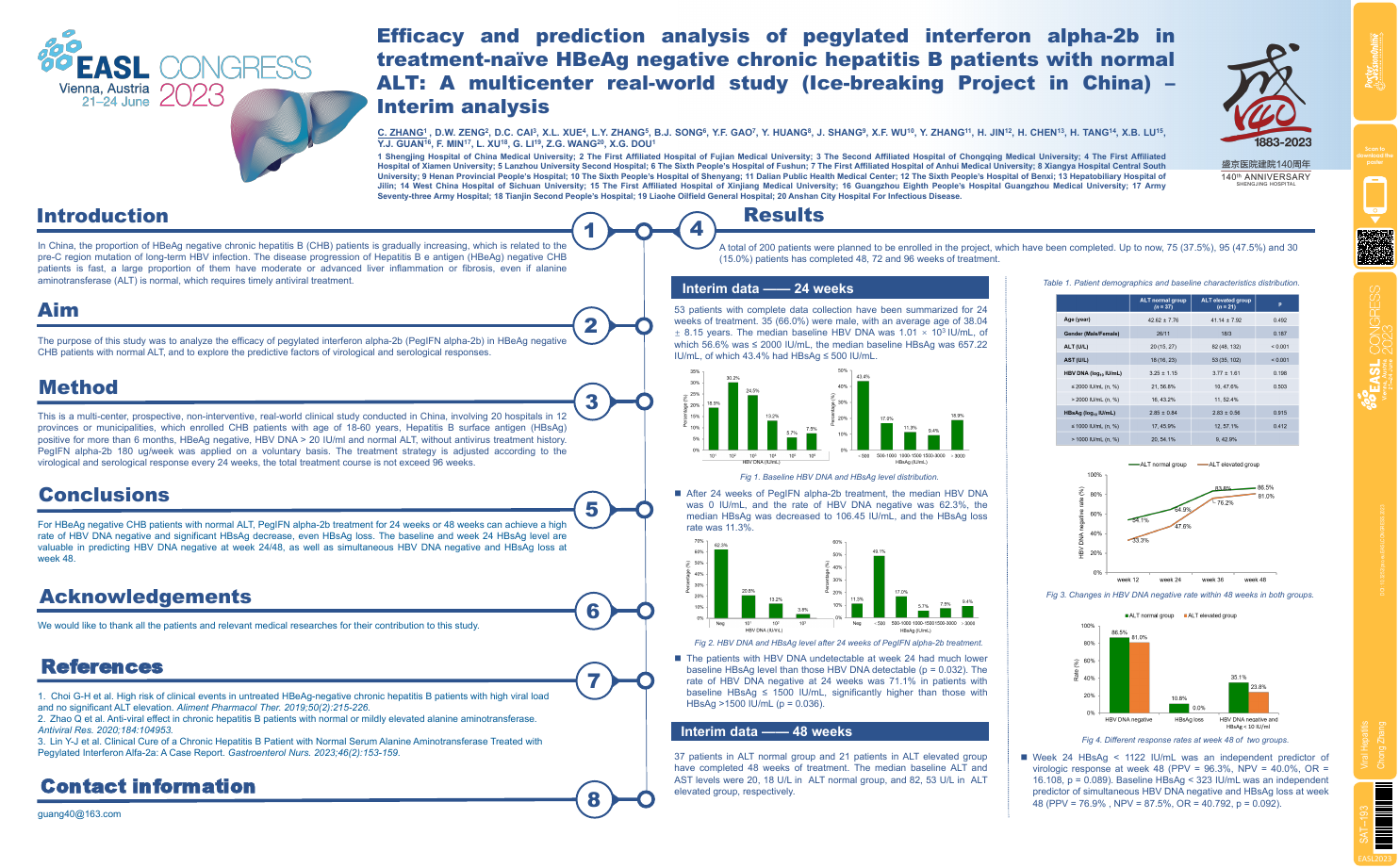
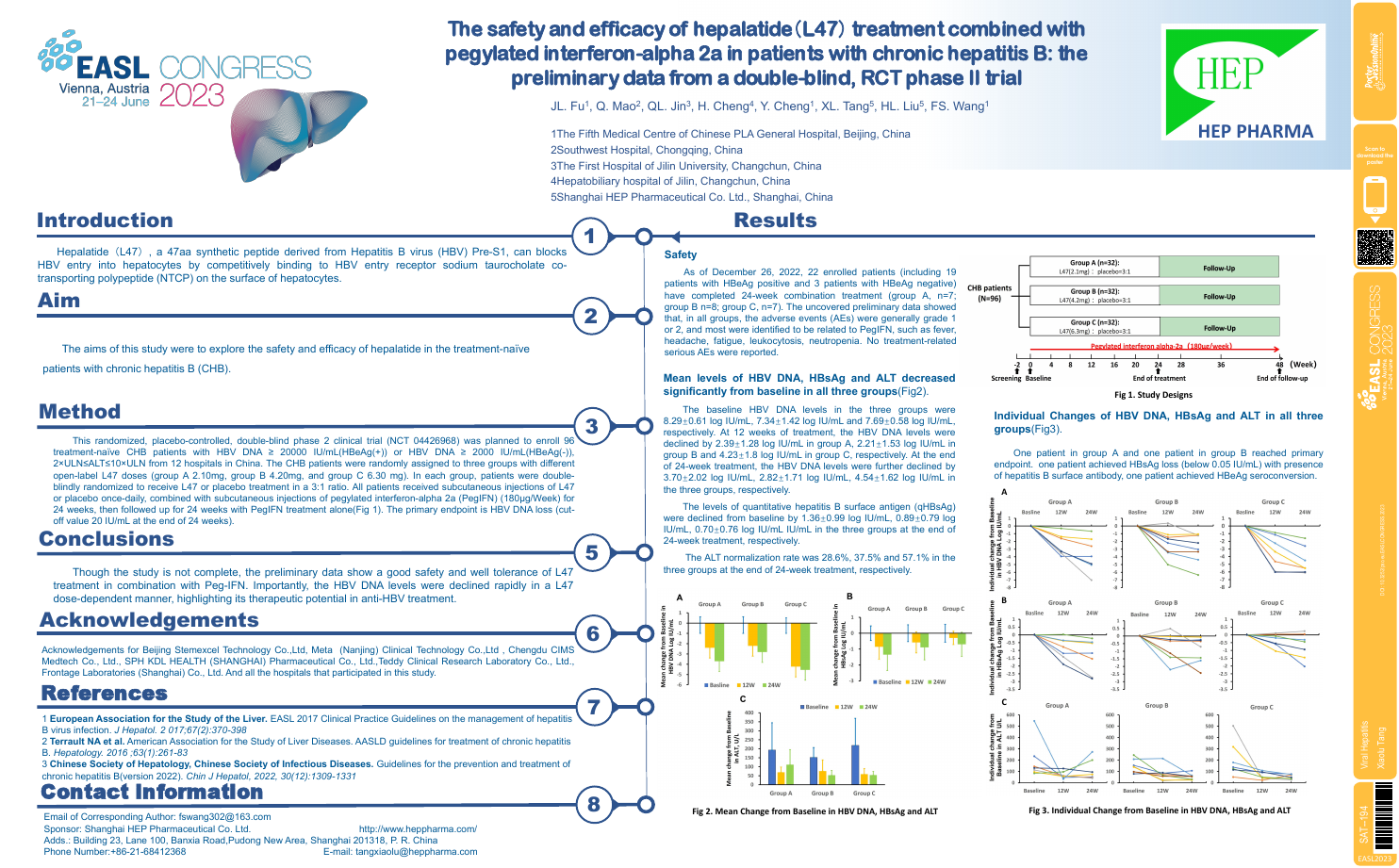
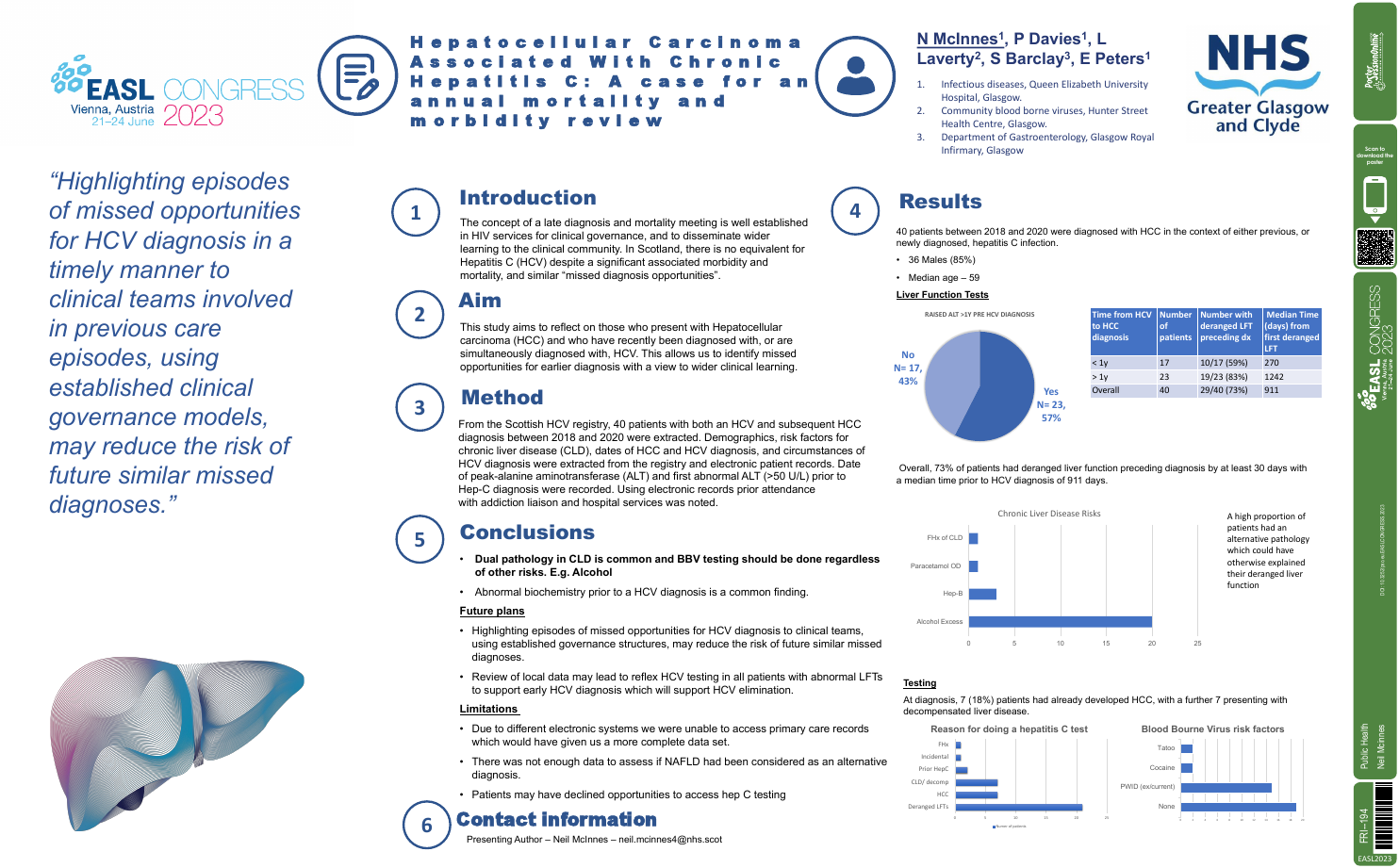
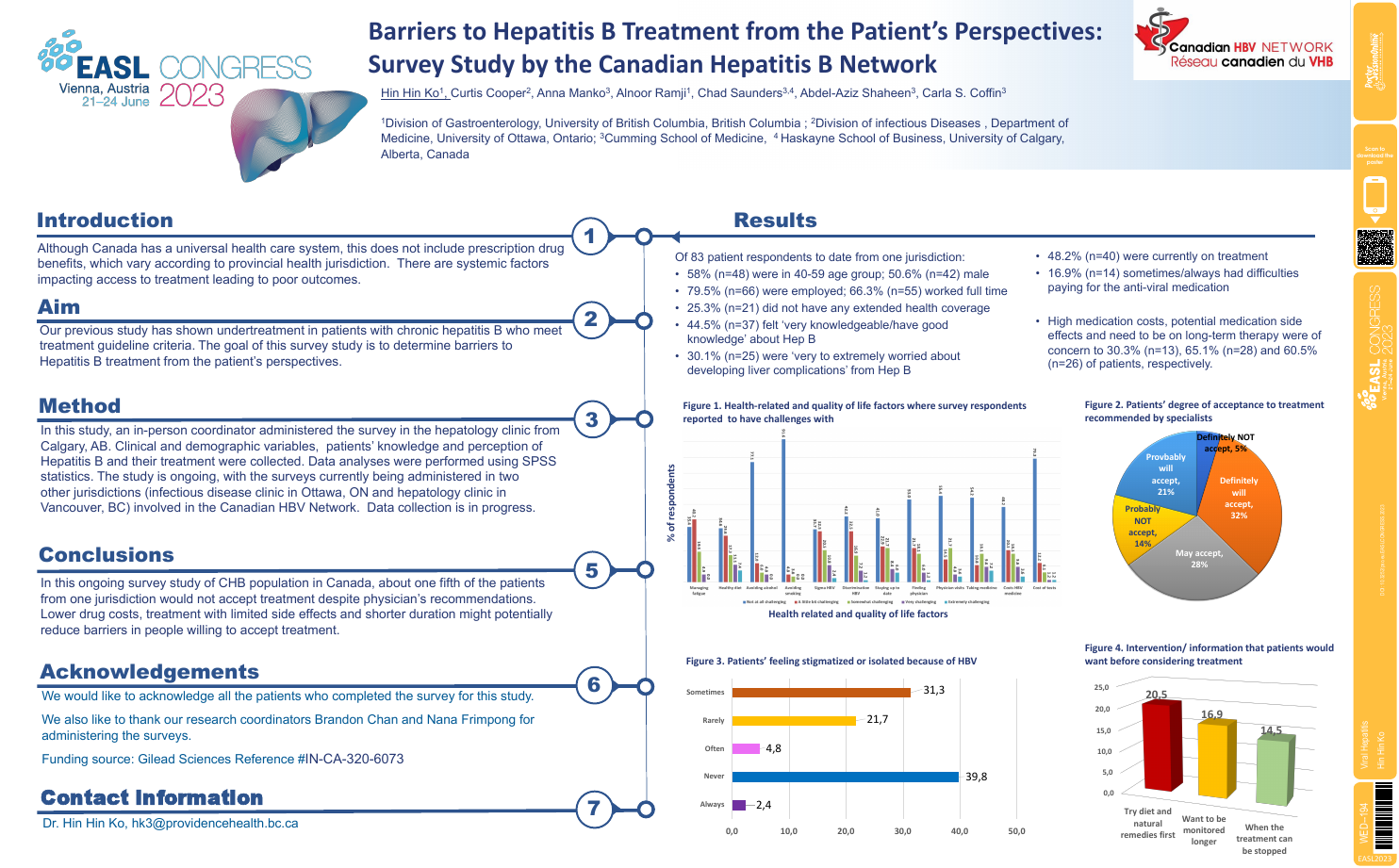
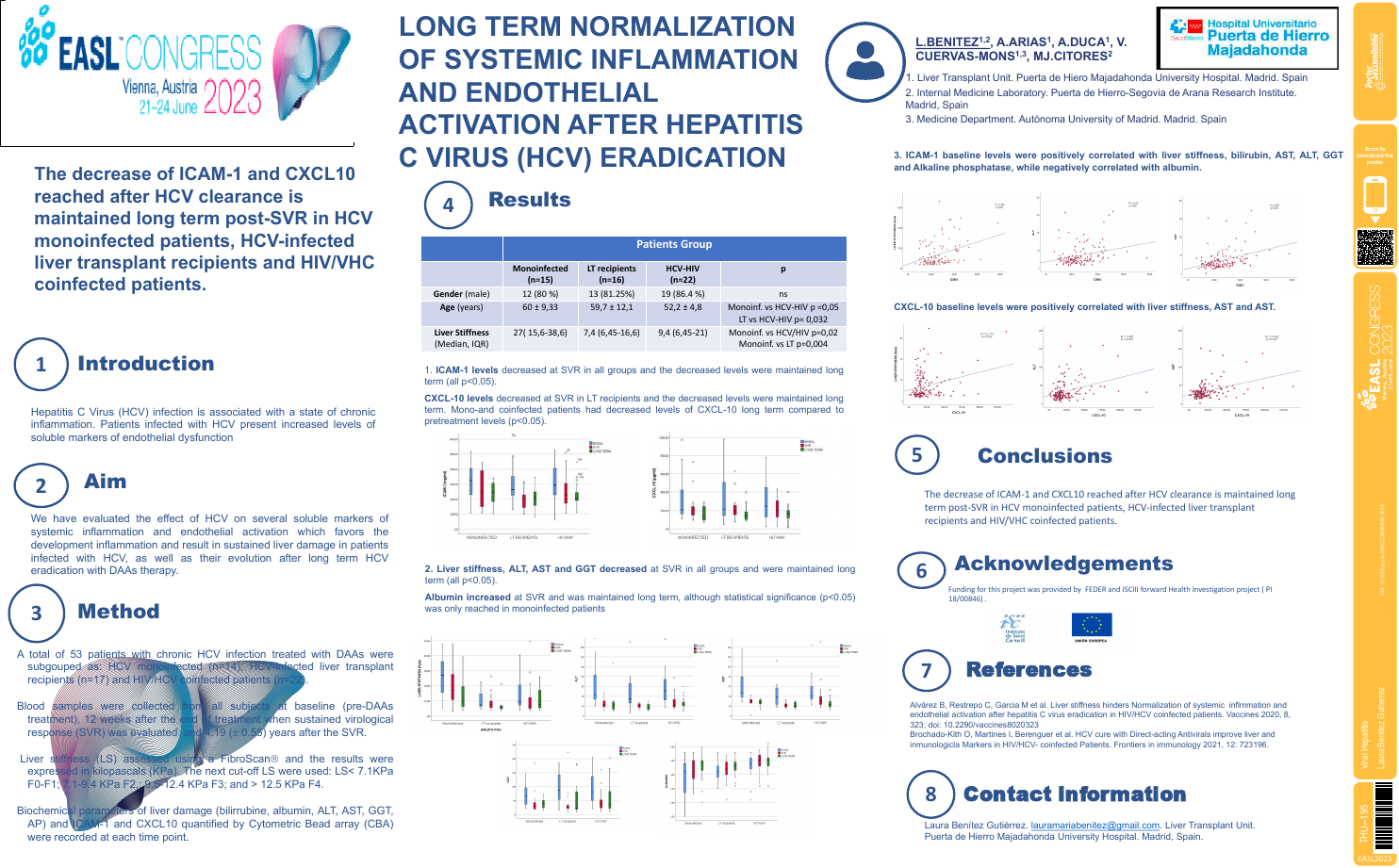
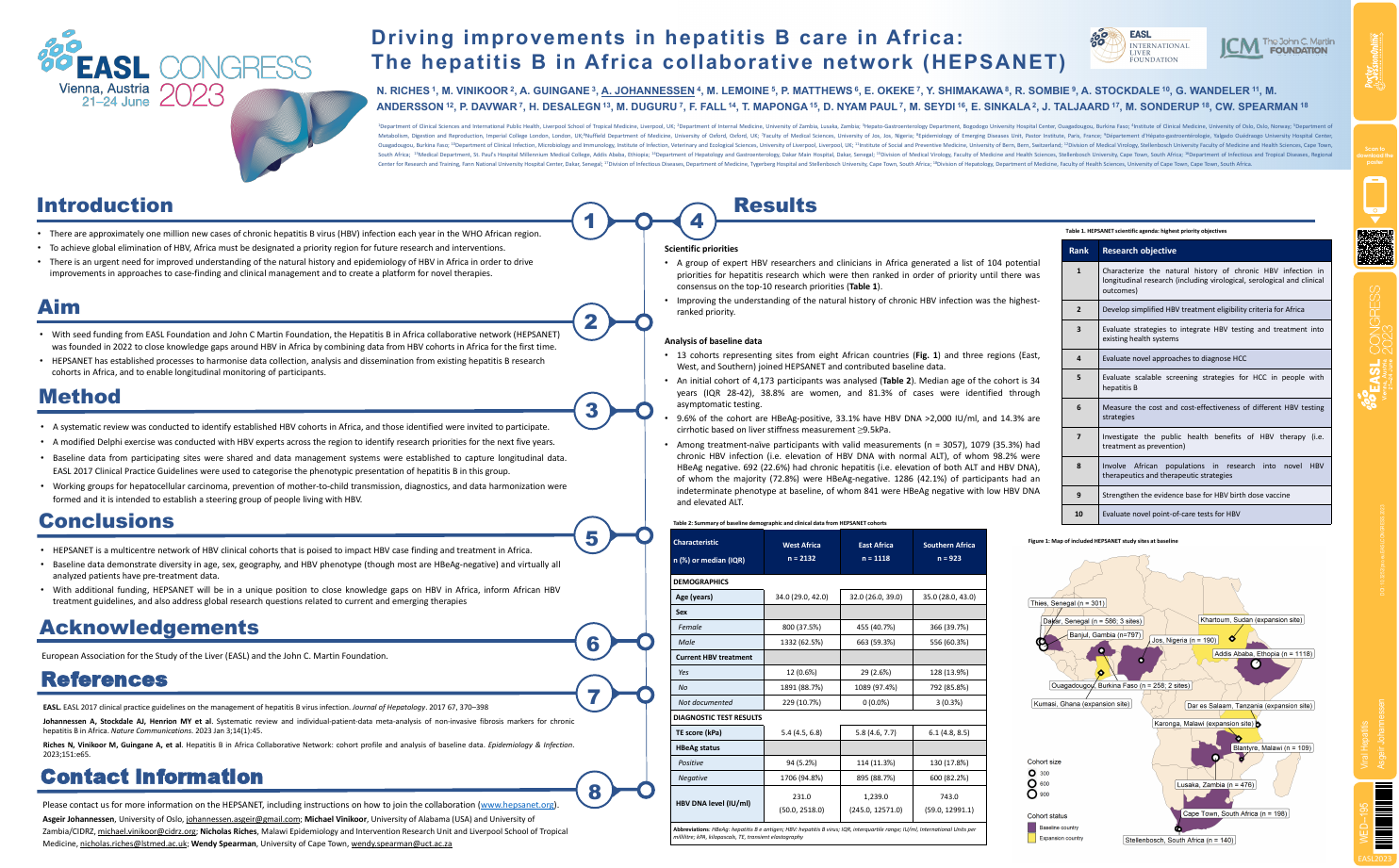
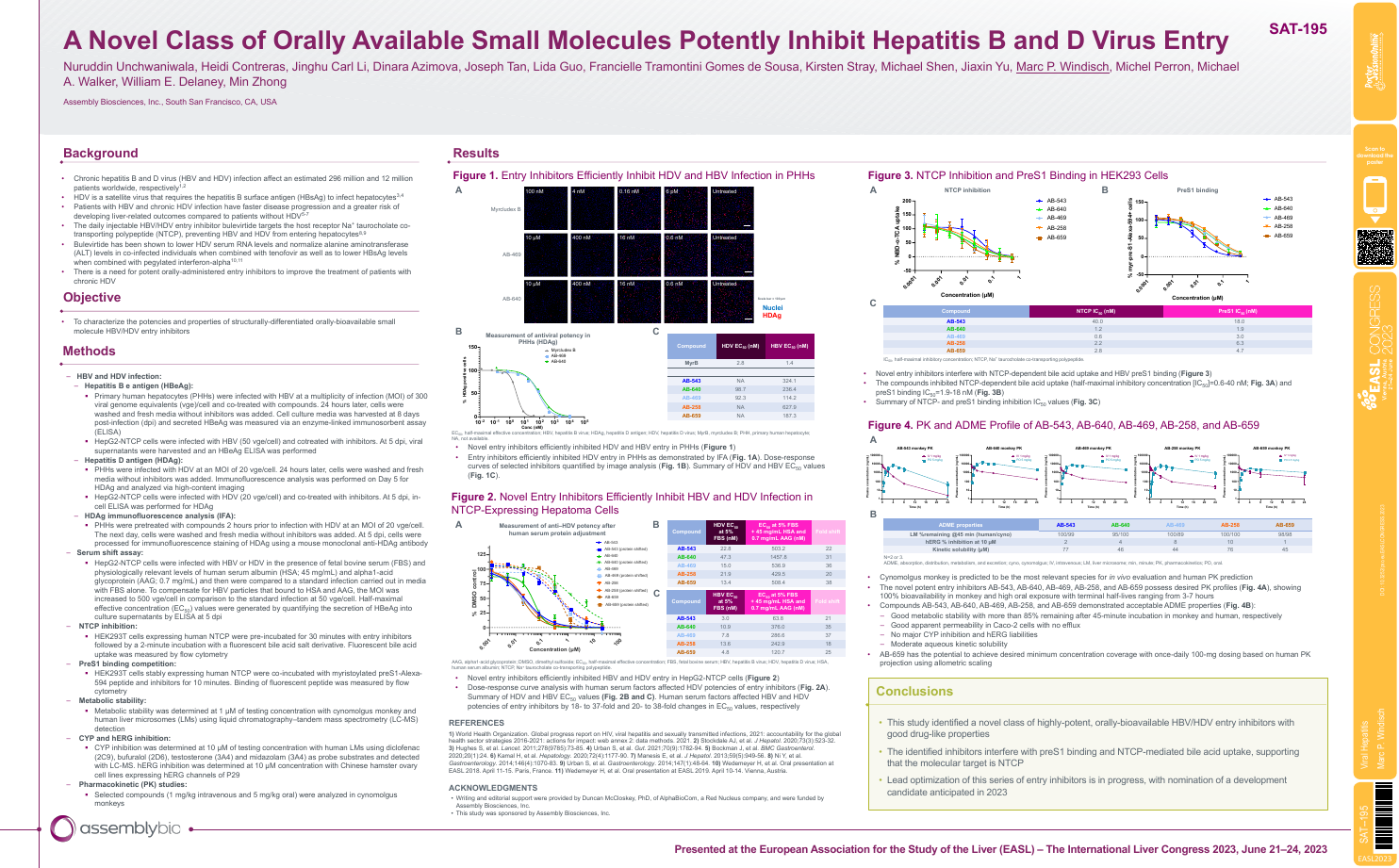
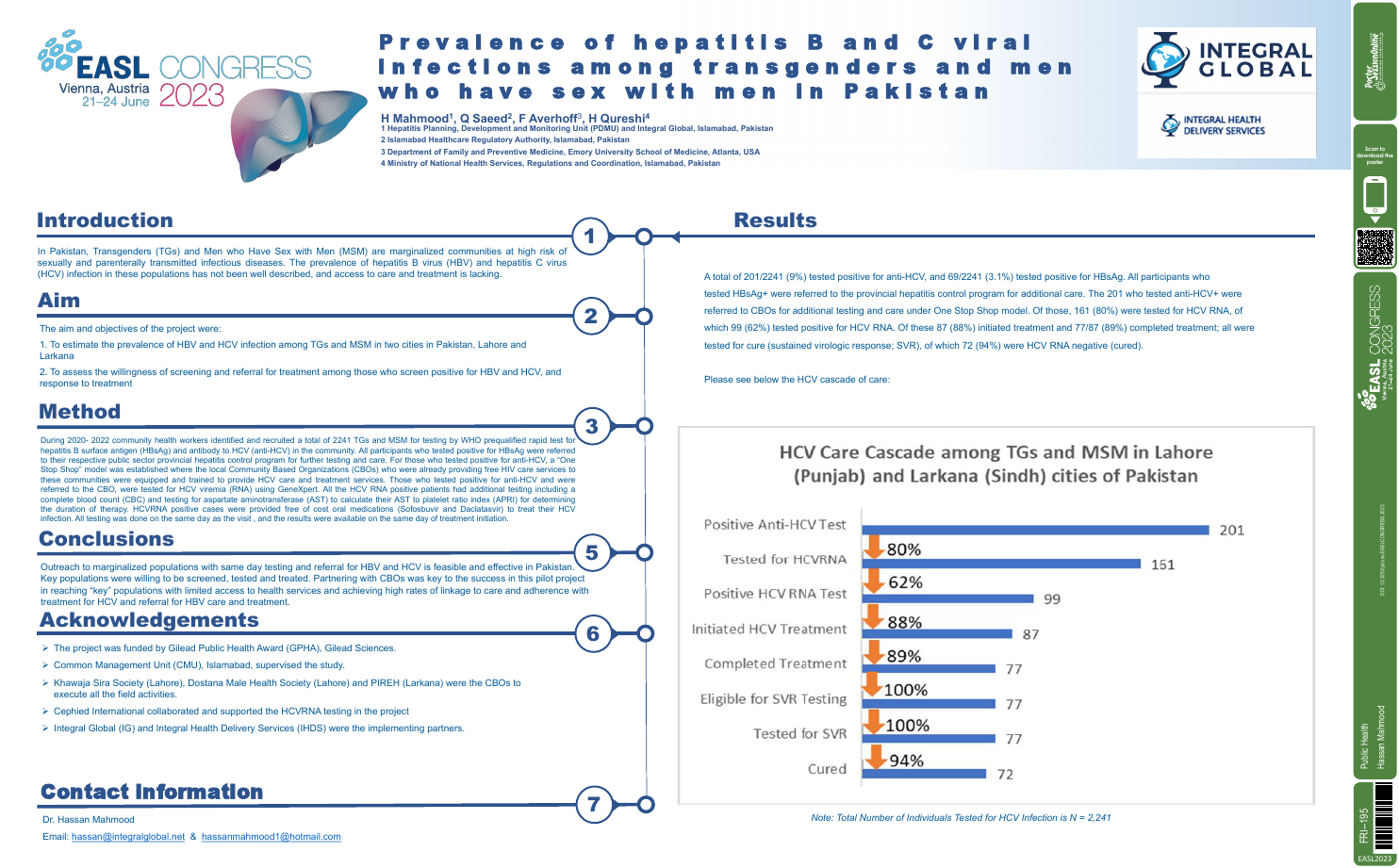
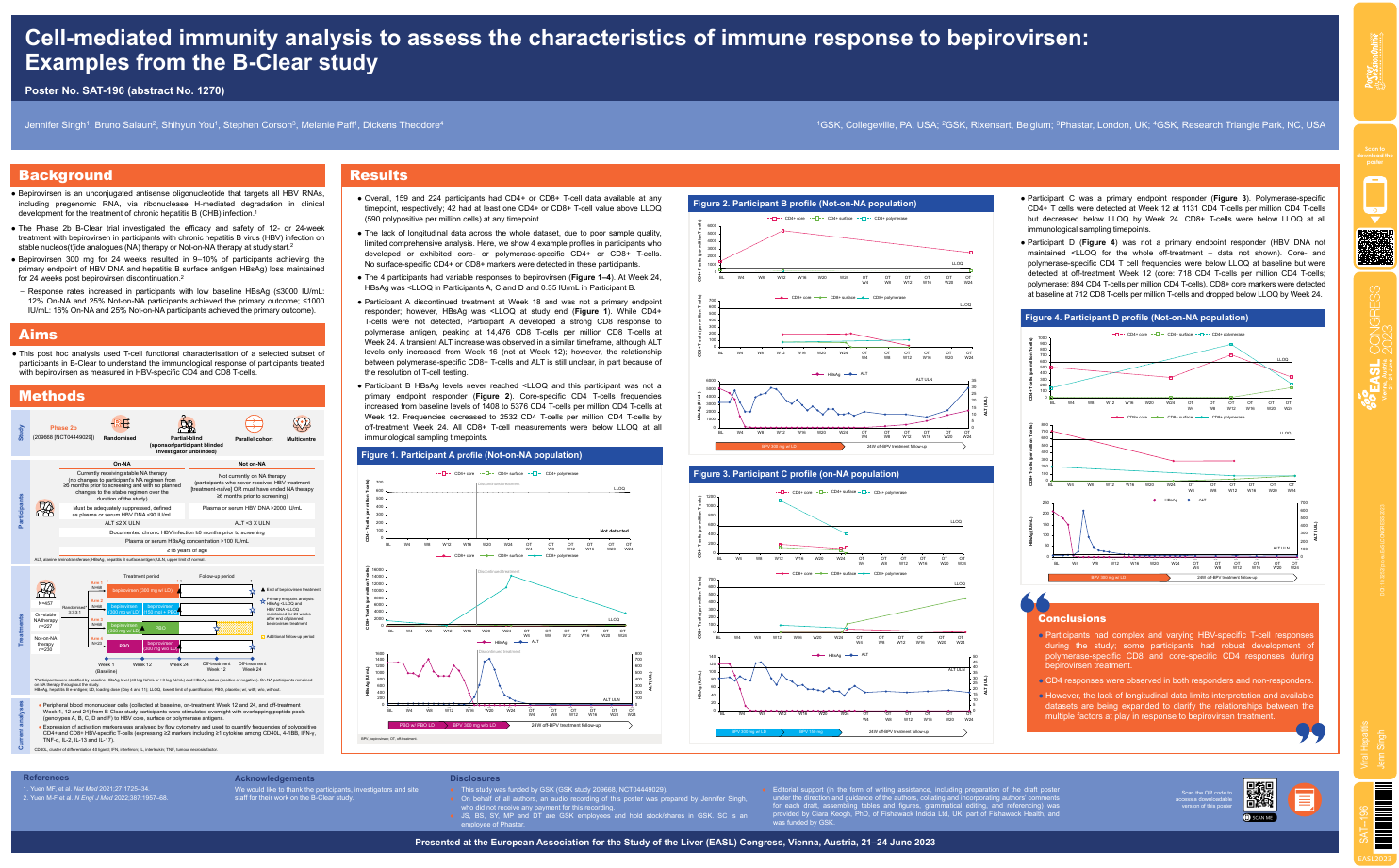
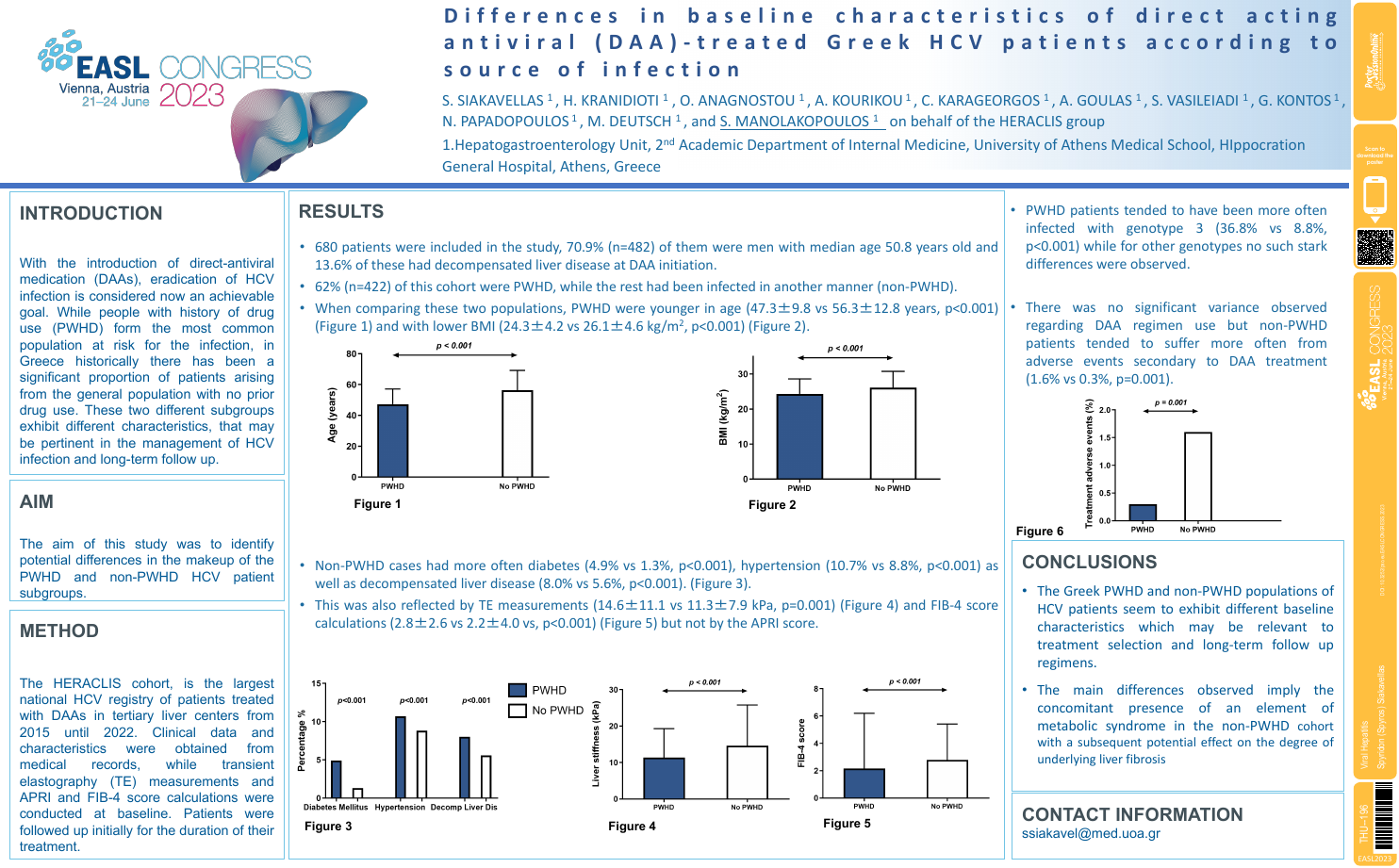
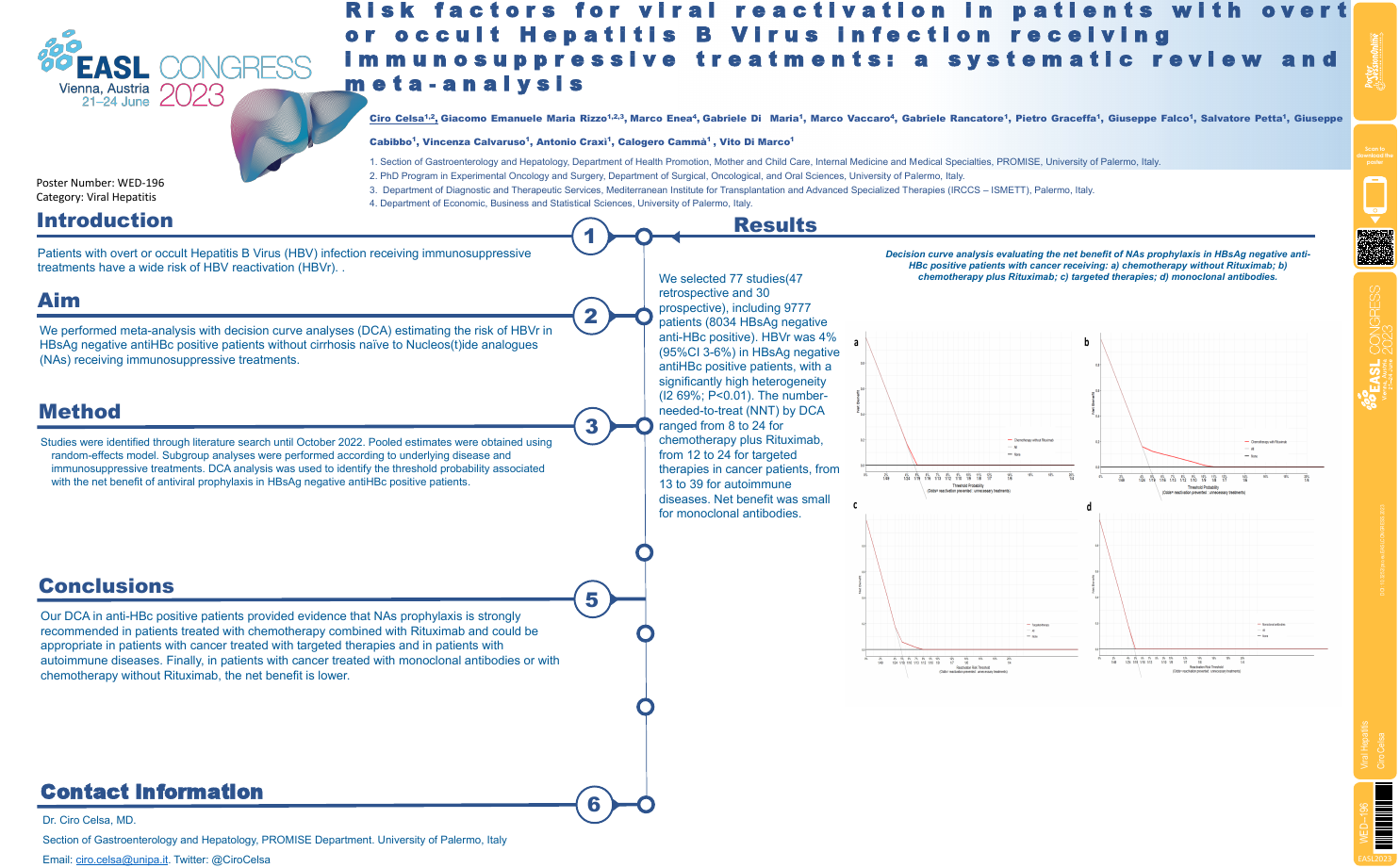
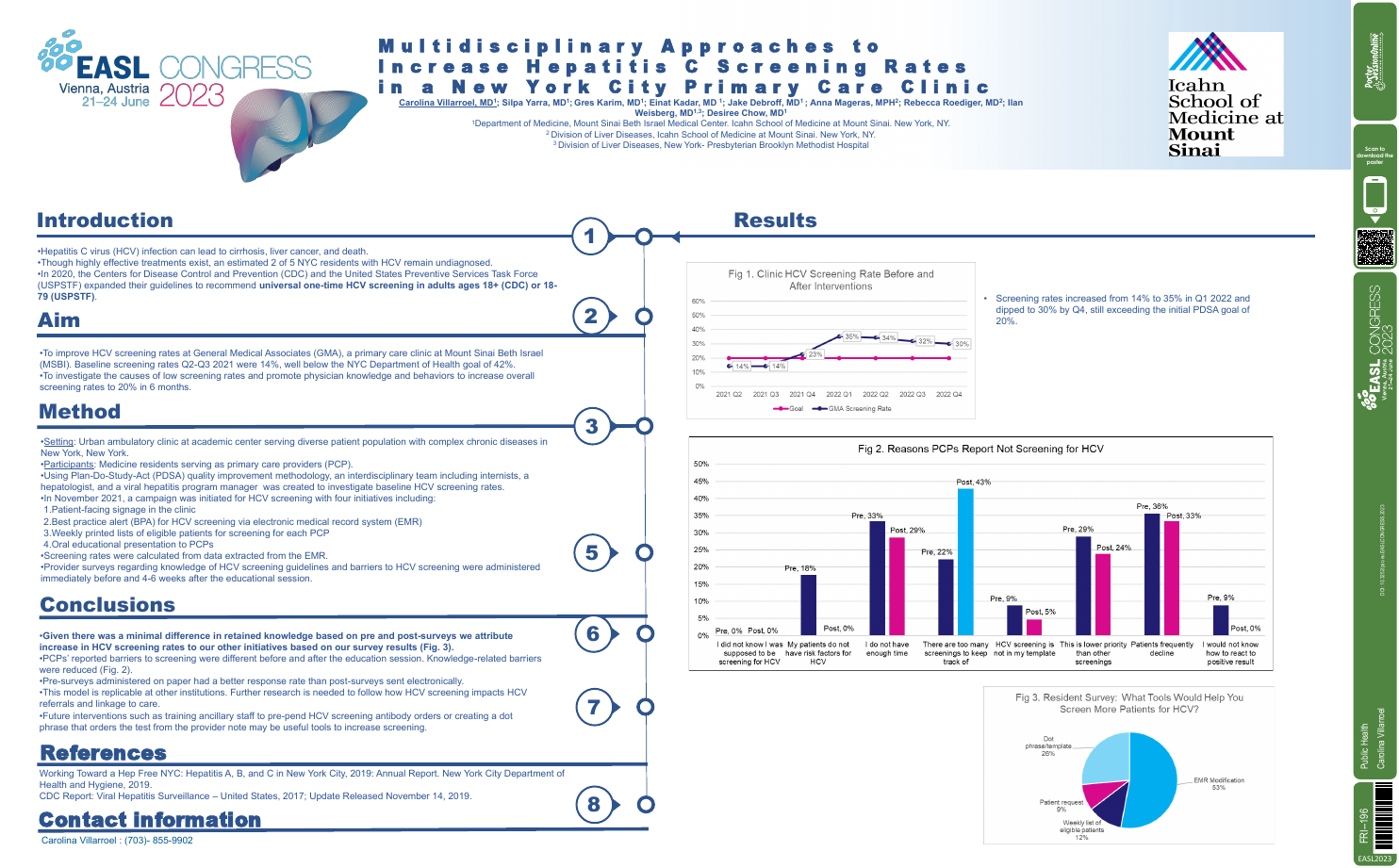
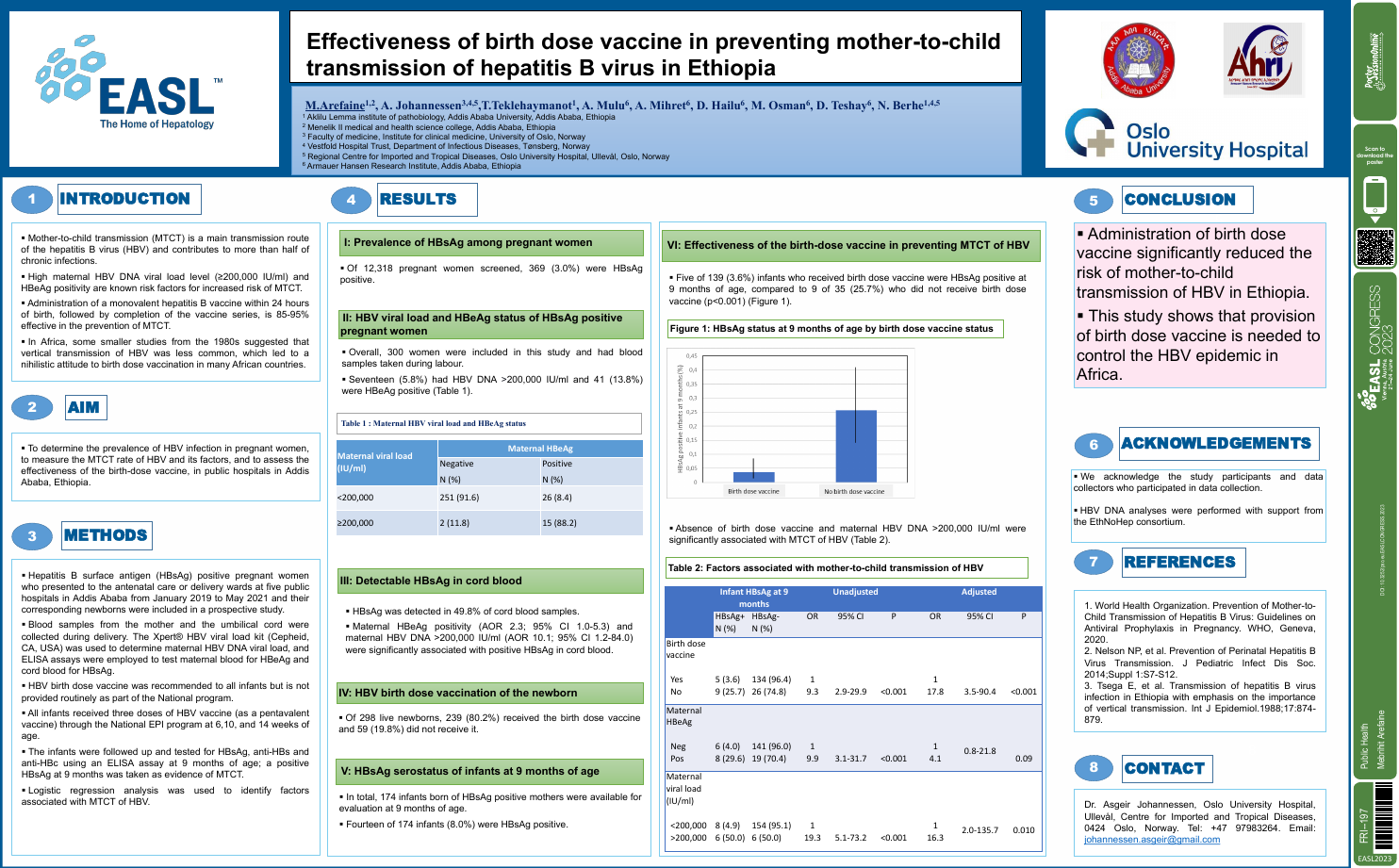
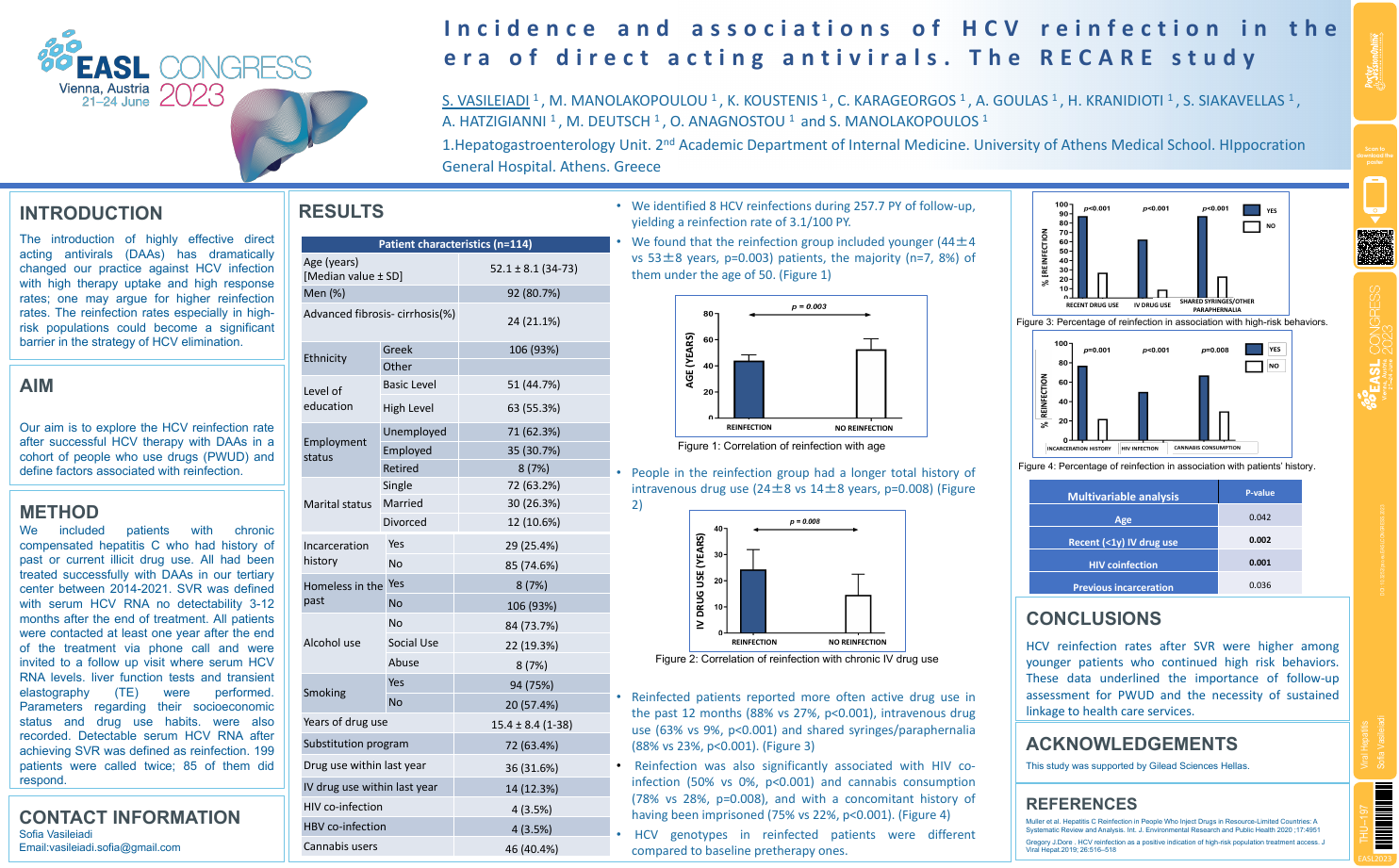
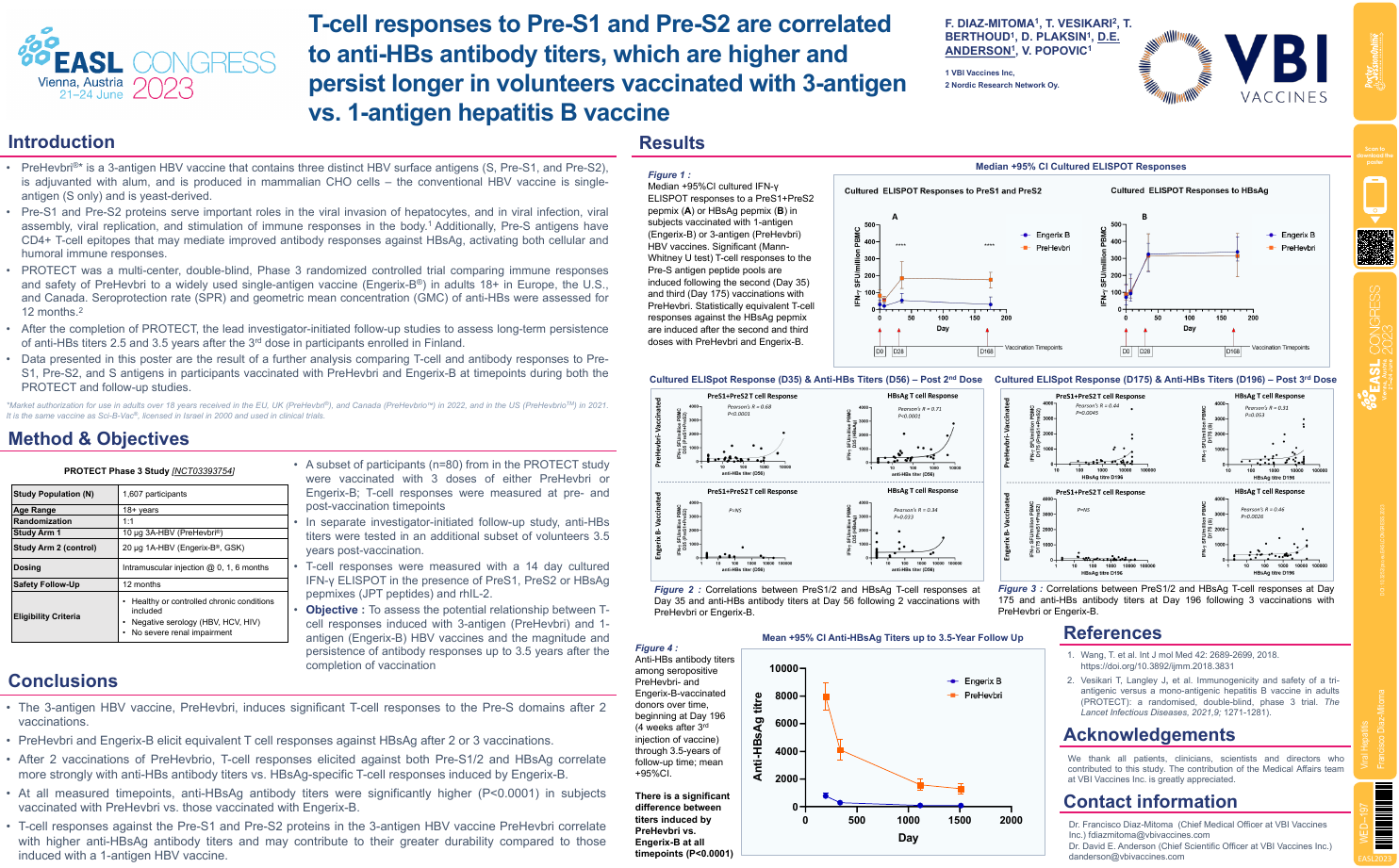
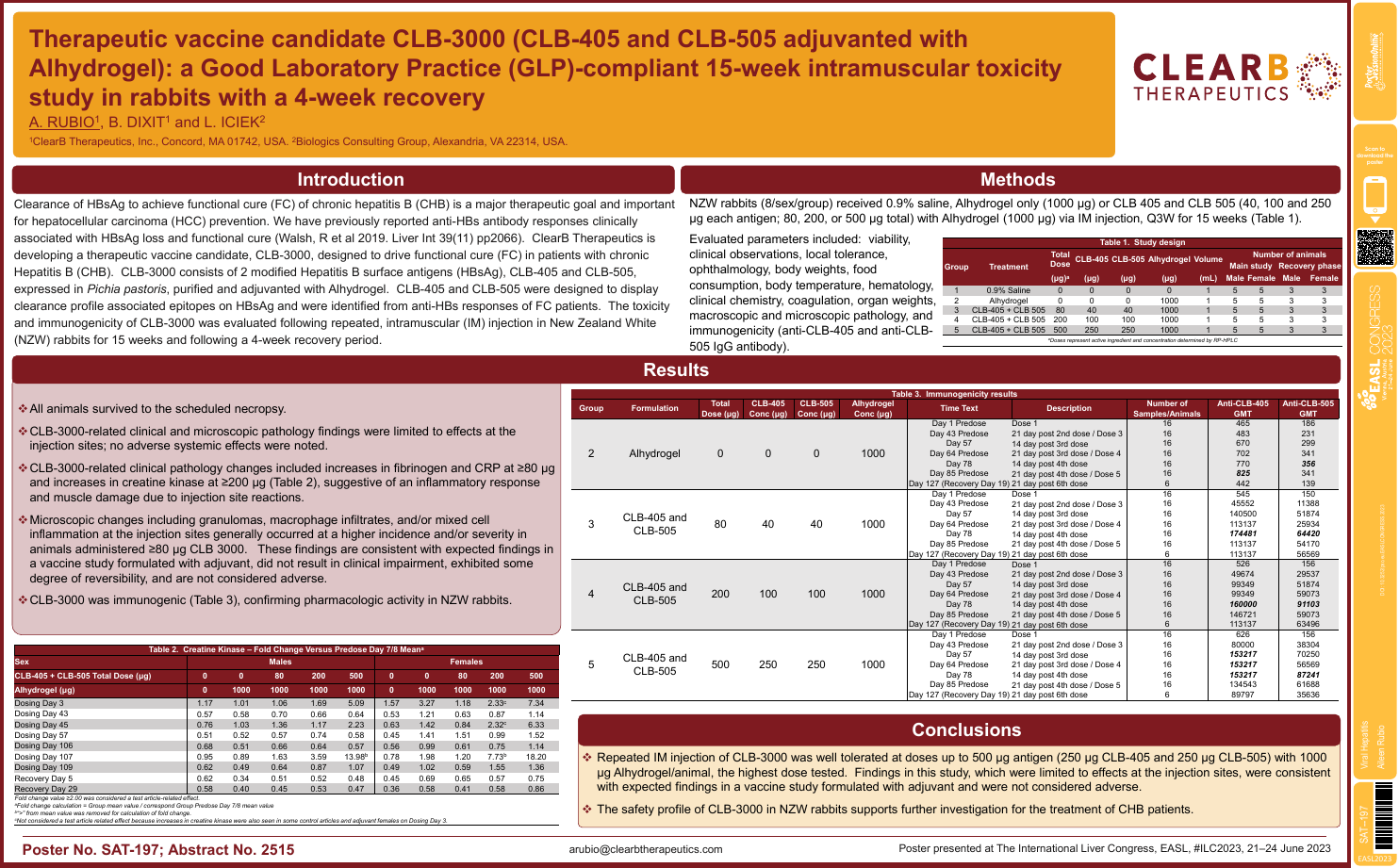
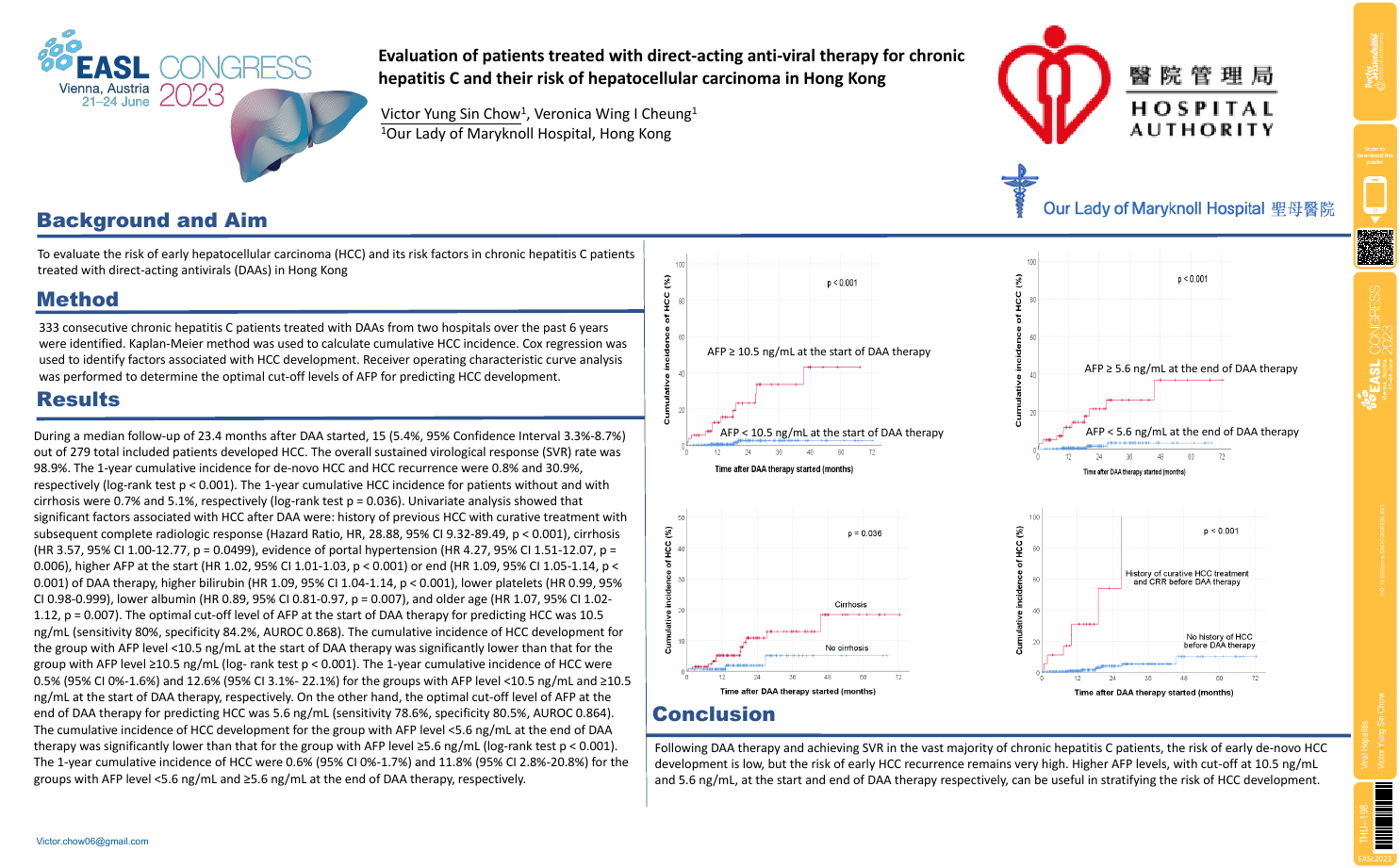
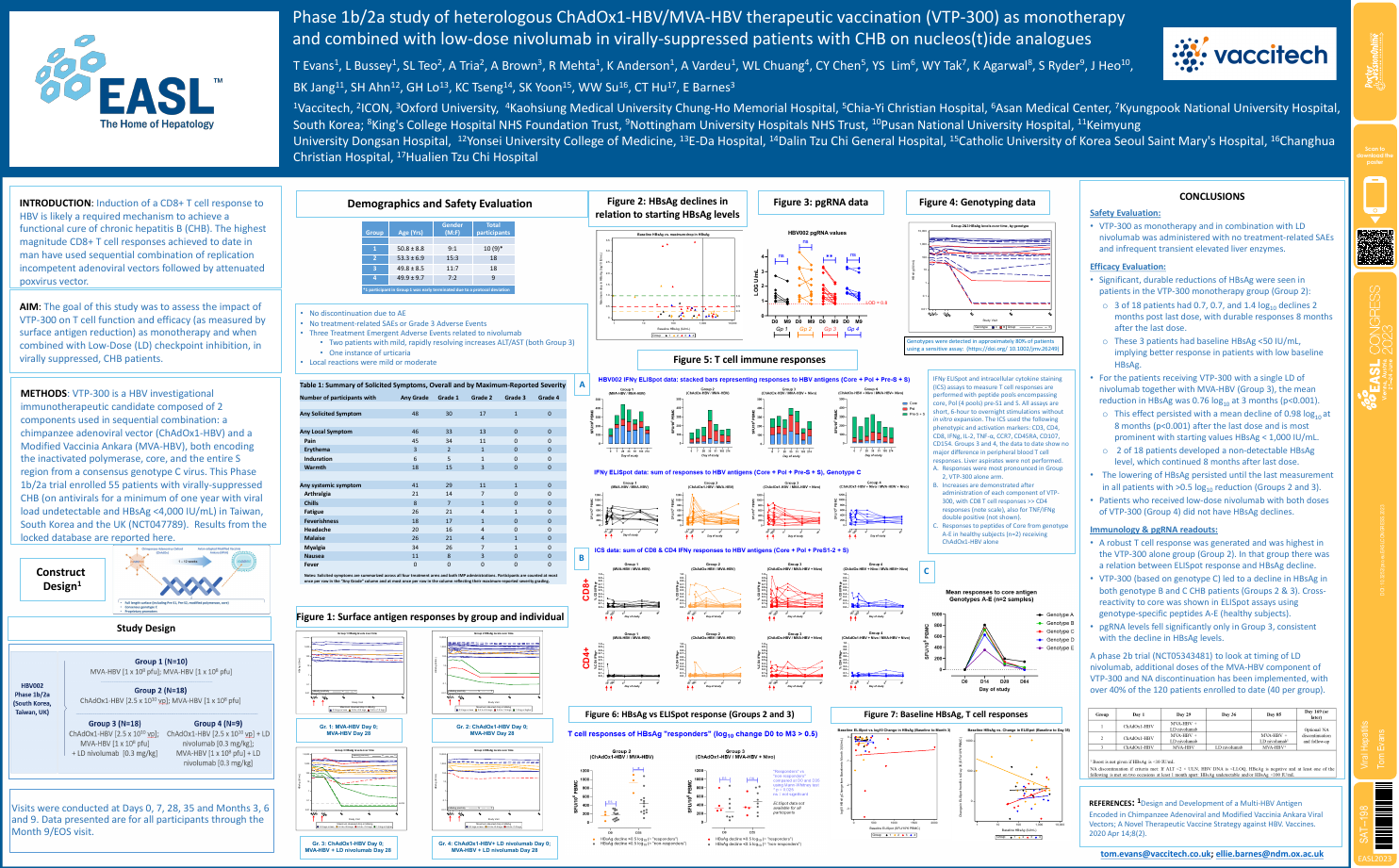
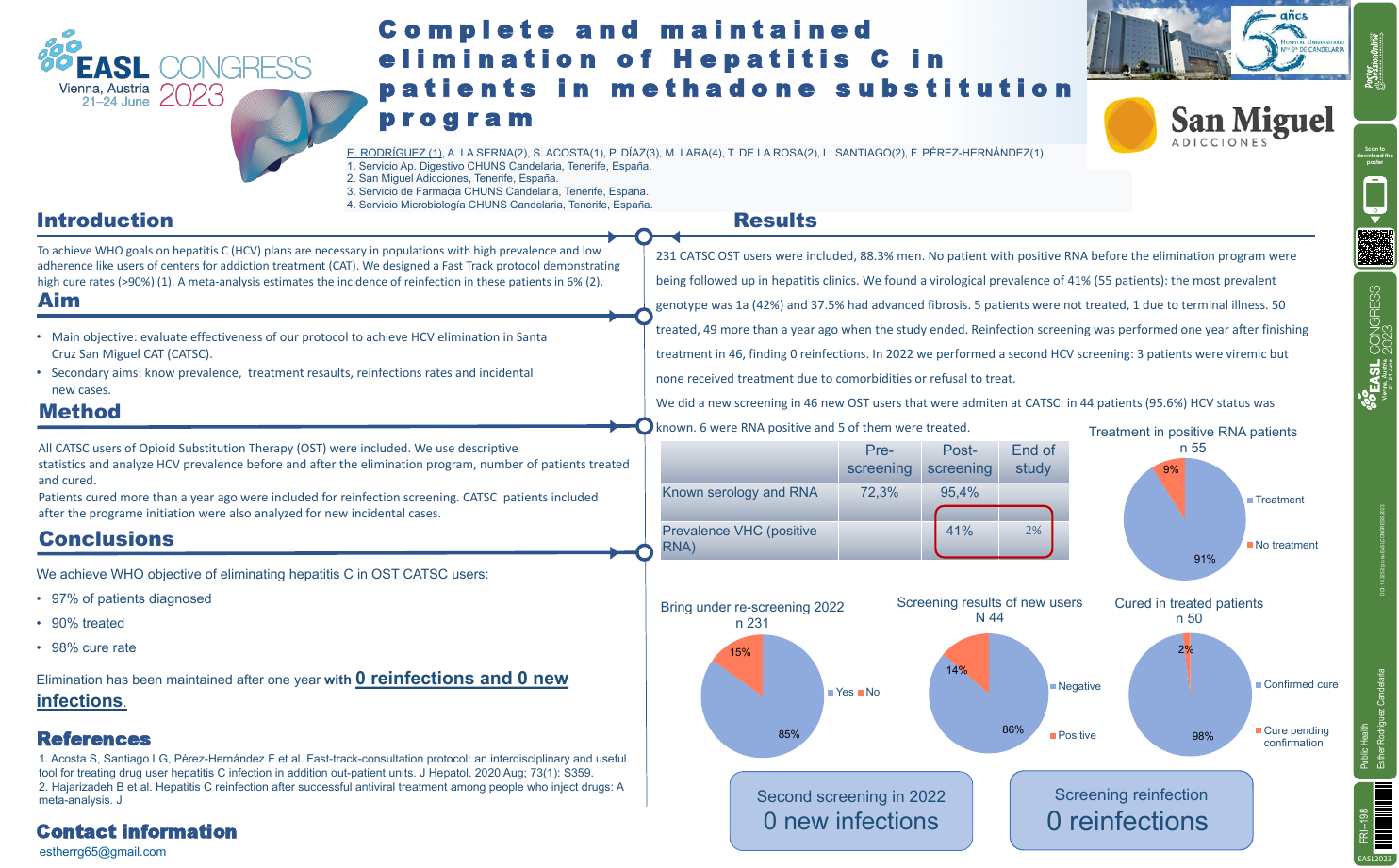
| Stability of Hepatitis B virus RNA in pl.. | Valerie Ohlendorf .. | .. | Viral Hepatitis.. | - - | |
| Efficacy and prediction analysis of pegy.. | Chong Zhang .. | .. | Viral Hepatitis.. | - - | |
| The safety and efficacy of hepalatide (L.. | Xiaolu Tang .. | .. | Viral Hepatitis.. | - - | |
| Hepatocellular carcinoma associated with.. | Neil Mcinnes .. | P Davies, L Laverty, S Barclay.. | Public Health.. | - - | |
| Barriers to hepatitis B treatment from t.. | Hin Hin Ko .. | .. | Viral Hepatitis.. | - - | |
| Long term normalization of systemic infl.. | Laura Benitez Gutierrez .. | .. | Viral Hepatitis.. | - - | |
| Driving improvements in hepatitis B care.. | Asgeir Johannessen .. | .. | Viral Hepatitis.. | - - | |
| A novel class of orally-available small .. | Marc P. Windisch .. | .. | Viral Hepatitis.. | - - | |
| Prevalence of hepatitis B and C viral in.. | Hassan Mahmood .. | .. | Public Health.. | - - | |
| Cell-mediated immunity analysis to asses.. | Jenn Singh .. | Bruno Salaun, Shihyun You, Ste.. | Viral Hepatitis.. | - - | |
| Differences in baseline characteristics .. | Spyridon (Spyros) Siakavellas .. | .. | Viral Hepatitis.. | - - | |
| Risk factors for viral reactivation in p.. | Ciro Celsa .. | .. | Viral Hepatitis.. | - - | |
| Multidisciplinary Approaches to Increase.. | Carolina Villarroel .. | .. | Public Health.. | - - | |
| Effectiveness of birth-dose vaccine in p.. | Mebrihit Arefaine .. | Asgeir Johannessen ,Tilahun Te.. | Public Health.. | - - | |
| Incidence and associations of HCV reinfe.. | Sofia Vasileiadi .. | .. | Viral Hepatitis.. | - - | |
| T-cell responses to PreS1 and PreS2 are .. | Francisco Diaz-Mitoma .. | David E Anderson.. | Viral Hepatitis.. | - - | |
| Therapeutic vaccine candidate CLB-3000 (.. | Aileen Rubio .. | Bharat DixitLaurie Iciek.. | Viral Hepatitis.. | - - | |
| Evaluation of patients treated with dire.. | Victor Yung Sin Chow .. | Veronica Wing I Cheung.. | Viral Hepatitis.. | - - | |
| Phase 1b/2a study of heterologous ChAdOx.. | Tom Evans .. | .. | Viral Hepatitis.. | - - | |
| Complete and maintained elimination of h.. | Esther Rodríguez Candelaria .. | .. | Public Health.. | - - | |
Abstract
Thunderstorm-related asthma in patients sensitised to olea europaea pollen: twenty emergency department visits for asthmatic symptoms in one single day Losappio, Laura1; Heffler, Enrico2; Falco, Antonio1; Contento, Francesco1; Cannito, Cosimo1; Rolla, Giovanni2 1"Dimiccoli" Hospital, Emergency Department, Barletta, Italy; 2University of Torino - AO Mauriziano "Umberto I", Allergy and Clinical Immunology, Torino, Italy
Background: Associations between thunderstorm and asthma morbidity have been reported in several countries. Common to all epidemics of thunderstorm-related asthma is a significant increase in atmospheric allergen load during and immediately after a thunderstorm. Sensitization to Alternaria species or to grass and parietaria pollens has been suggested to play a key role in thunderstorm-related asthma. The only reported event of thunderstorm-related asthma in Mediterranean area was attributed to sensitization to parietaria pollen.
Method: here we describe a series of 20 patients who presented to Emergency Department in Barletta (94,000 inhabitants), Puglia (Italy) for sudden and severe asthmatic symptoms between May 27th and 28th 2010 (from15:36 to 5:02), immediately after a violent thunderstorm which occurred following a very hot morning (mean temperature: 29°C). All the patients have been subsequently visited by an allergist and underwent allergological work-up which included skin prick tests and a careful clinical history. Local pollen counts were available.
Result: Between May 10th and June 10th 2010, 86 Emergency Department asthma visits were recorded, 20 of them during the study day. Patients' mean age was 44.25 +/- 18.5 years (range: 9-81), 8/20 females, 2 smokers, 16 with a previous history of known respiratory allergy. Only two patients regularly took anti-asthma drugs. All 20 patients were sensitized to Olea europaea pollen, 7 of whom were monosensitized. Ten patients were sensitized to grass, 7 to parietaria, 5 to compositae, 5 to cypress, 5 to house dust mites, 3 to dog and 1 to cat danders. No patient was sensitized to Alternaria. Mean pollen count was 17 granules/m3 for Olea europaea, 6 granules/m3 for grass pollen.
Conclusion: This is, in our knowledge, the second epidemic of thunderstorm related asthma described in Mediterranean area and the first one in which sensitization to Olea europaea played a key-role. In conclusion, our report indicates that thunderstorm asthma may involve different allergens (not only fungal spores and grass or parietaria pollen) in different geographic areas, depending on the seasonality of thunderstorms and allergenic pollen.